This week leaders from Metro and the City of Portland will make a decision on whether or not to support the multi-billion-dollar megaproject that would widen I-5 between Portland and Vancouver and replace the aging Interstate Bridge. They are being asked to endorse the project’s Locally Preferred Alternative (LPA), a major milestone in the federally-required environmental review process.
The LPA is what will move forward into more in-depth analysis. If a particular design isn’t part of the LPA, the project team has every (legal and political) right to say, “Sorry, that wasn’t endorsed as our LPA. We can’t look at that.”
Suffice it to say, this is one of the rare moments when local political bodies can assert influence over this massive project. And while the tea leaves suggest it will get the votes it needs, there’s still a lot to watch as this week’s discussions unfold.
Below is a bit of context of where the project stands, followed by a few thoughts on the two big votes ahead.
Project Status
You’d think that after its spectacular failure a decade ago (when it was known as the Columbia River Crossing project), IBRP staff would have figured out how to clear the many hurdles required to reach the finish line. But it hasn’t played out that way.
Just last month, Willamette Week reported on a “significant complication” of the proposed design being too low for the U.S. Coast Guard to support. Like they always do, IBRP project staff said it’s much ado about nothing and they’re working with USGC to find a solution they can support.
But contention about the height of the bridge (too low and ships can’t pass through, too high and transit and other users can’t get over) is just one of the many little fires the IBRP team is trying to put out.
The project is being criticized for being too small and too big, and there are still many unanswered questions around how it will be funded and other key details.
The headline from the LPA is that the project is recommending the “one auxiliary lane” option; but a noted critic of the project, urban economist and No More Freeways co-founder Joe Cortright, says that could be a wolf in sheep’s clothing.
The Just Crossing Alliance, a coalition group that includes The Street Trust, Bike Loud PDX, Sightline Institute, Sierra Club, 1000 Friends of Oregon and many others (at right), thinks it is, “irresponsible to move forward with this single alternative.” They want Metro and Portland City Council to delay a vote on the LPA and require the Oregon and Washington departments of transportation to include another design alternative (like a lift bridge or tunnel) to be studied further.
On the other end of the advocacy spectrum, the IBRP is hearing that their LPA isn’t big enough. At a meeting of the City of Portland Freight Advisory Committee last week, several members made it clear the design should have more lanes.
After seeing a presentation by an IBRP staff person, Columbia Corridor Association Executive Director Corky Collier said, “In the CRC process, the data was quite clear that three auxiliary lanes worked best for traffic flow, but two auxiliary lanes was a close second place. And one auxiliary lane was a distant third place.” Oregon Trucking Association President Jana Jarvis also sounded skeptical of the LPA being only one auxiliary lane. “One of the things that stuck out in my mind when I looked at the numbers [of one auxiliary lane] was northbound traffic during certain periods of congestion only improved by two minutes,” she said, while asking for more analysis of two lanes.
At that same meeting, IBRP Deputy Program Manager John Willis cautioned members about equating auxiliary lanes with increased capacity. “I’m probably going to get in trouble for saying this,” Willis said. “But I think when we start describing the aux lanes from a capacity point of view we miss the real reason for putting those in… it’s safety, it’s operations, and yes, they do improve flow for the three general purpose lanes.”
“So Corky, you and I have to learn to refer to it as ‘flow’ and not ‘capacity’,” Jarvis replied, “We got it, John, we will change our terminology.”
There will be a lot of careful words chosen on Wednesday and Thursday when Portland City Council and Metro convene.
Portland City Council (Wednesday)
After her predecessor demonstrated historic opposition to the project and gave local activists a glimmer of hope, Portland Bureau of Transportation Commissioner Jo Ann Hardesty just wants to get something built.
Hardesty supports the LPA and will frame it as a win for herself and activists because of how it could have been much wider. Without objections from Hardesty, no other council member will dare stick their necks out to stop this project’s inertia.
I can imagine Commissioner Mingus Mapps asking questions about climate impacts and funding, but IBRP staff will be prepared to return serve and will very likely win the point.
Metro Council (Thursday)
Metro is the vote many activists will watch closely.
You might recall back in January when they adopted a long list of detailed conditions for their support of the LPA. Councilors wanted project staff to study different design options that would be less expensive and dramatically increase transit ridership. They wanted an “investment grade” financial analysis, more details on climate impacts, and so on.
The project team has not met those conditions. Instead they are saying, essentially, “We hear you. You’ll have to trust us.”
And there have been serious concerns leveled by Metro councilors in the recent past that they’ll have to rectify with themselves — and with voters — if they endorse the current LPA. Over the past few months, the tone has become a bit more agreeable, but that was before a clear line in the sand needed to be drawn.
Stay tuned for more coverage. Follow our live thread on Twitter starting with the Portland council meeting Wednesday at 9:45 am.



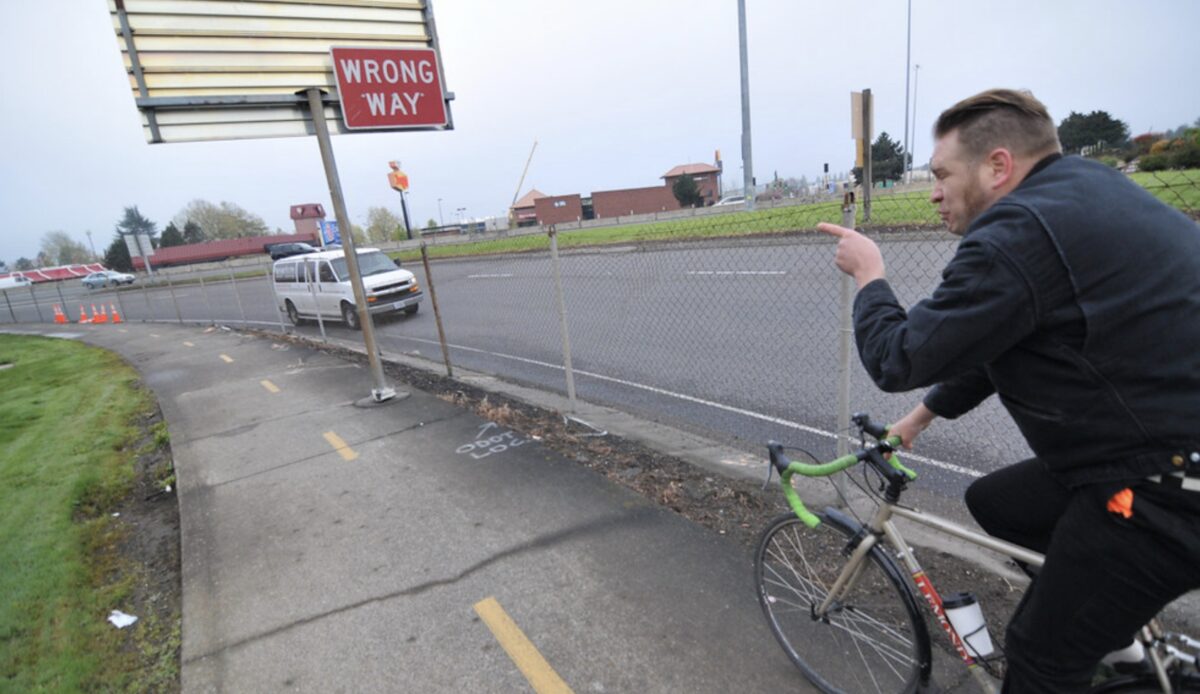
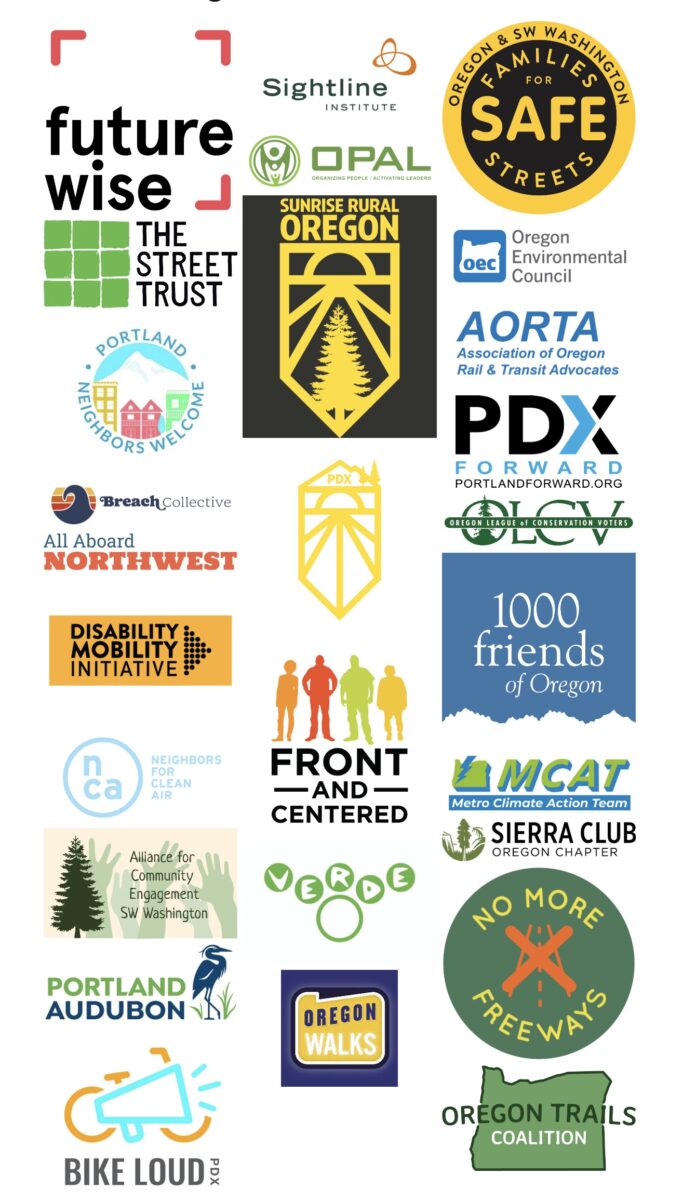
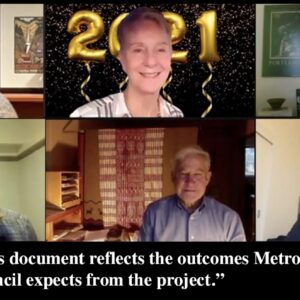
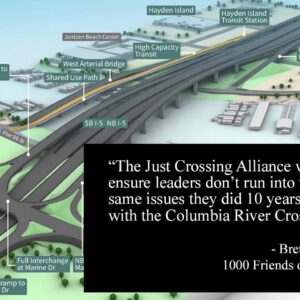
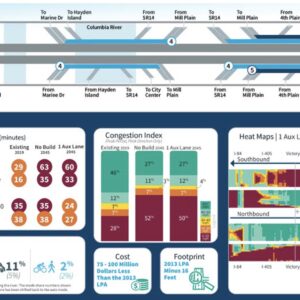

Thanks for reading.
BikePortland has served this community with independent community journalism since 2005. We rely on subscriptions from readers like you to survive. Your financial support is vital in keeping this valuable resource alive and well.
Please subscribe today to strengthen and expand our work.
Then: Hardesty was a climate champion
Now: She just wants to get something built.
Then: Peterson didn’t support adding lanes to the CRC
Now: Moar megaprojects!
Then: Metro adopted a long list of detailed conditions for their support of the LPA.
Now: We’ll trust you!
Portland leaders: Bold talk, bolder concessions.
Flow rate multiplied by lane count equals volume. If traffic flow is consistently higher over time, the volume of vehicles traveling over time is also higher. It’s middle school math, people.
The exchange between Jarvis and Willis is very telling. The freeway building program manager publicly cautioned the freeway widening advocate to not say the quiet part out loud. Just keep calling it a ‘safety’ project and we can avoid any discussion of climate impacts.
Auxiliary lanes do increase capacity. It’s an out and out lie to claim otherwise. One increases capacity a modest amount. Two or three increases capacity a lot.
Whether or not there is additional road width for future restriping is a red herring. The LPA is already a capacity enhancement project.
Excellent point, Boyd. Now that I re-read that exchange, he’s very clearly telling her, DON’T say the quiet part out loud!
While I still prefer the ‘no build’ option, this isn’t the end of the world assuming only 1 auxiliary lane is included and ODOT doesn’t try to pull some corruption with enough unallocated space for more lanes in the future. Portland or Metro should try to include stipulations that MAX runs more frequently than every 15 minutes from Vancouver to at least the Rose Quarter (might not be possible across the Steel Bridge without major infrastructure investments).
If MAX to Vancouver happens, one option would be to route the Green line north at the Rose Quarter. This would free up capacity on the Steel Bridge and greatly improve service along the Interstate Ave corridor. Riders from Clackamas wanting to go to Union Station or PSU would have an easy cross-platform transfer (to a now more frequent yellow line), or could transfer to blue/red to access other parts of downtown. Another benefit would be giving Vancouver and Interstate area commuters a one-seat ride to all the stops on the Green Line.
Trimet needs to get away from the idea that all MAX lines have to go downtown.
Or maybe, why does the Max even have to go over the Interstate bridge or its replacement at all? Why can’t Max go over 205 bridge? Seems like there would be more park-n-ride options near the 205 bridge for Vancouverites than downtown Vancouver. Or a bridge dedicated just for it and/or other transit like Tilikum?
And I agree Trimets myopic view that all things lead to Max that then lead to downtown is way past feasibility.
Why park and rides? Being next to the max is very valuable and to waste it on a parking lot…
We need more transit oriented development.
Sure, though the artificial feeling “communities” that tends to spawn aren’t really all that appealing to most folks.
Considering that we’re all phenomenologically separate, all communities are artificial. I.e., communities form because people seek each other out. What the U.S. lacks is sufficient places for that other-seeking to happen spontaneously; our world’s been privatized. TOD with lots of residences are–in contrast to the various “villages” or whatever you want to call the pretentious autocentric malls and strip malls that litter this country–much more “natural” places to be made truly public, i.e., great places to meet spontaneously, even if they are physically artificial.
I used to live in Orenco and yeah it felt pretty artificial since everything was brand new. But its appealing to enough people that it was always lively with people.
When I MAX from Clackamas Town Center to Beaverton (such as the last 2 weeks after my cataract surgery – the medical assistant almost choked when I called the 4mile ride from work to CTC taking it easy 🙂 ) I get off the green line at the Rose Quarter and wait 2-3 minutes for a blue line – regardless of which of the 3 most common times i come through there (4:05, 4:19 and 4:32 IIRC).
I think your plan of making the green line turn north there instead of running up to PSU is pretty sound.
I hope you now realize what a phony opportunist Hardesty is.. Finally…
I don’t think Hardesty’s supporters really care much about what she actually accomplishes as a city councilor. They just wanted someone different who would shake things up. They must now be pretty disappointed to see her supporting the status quo on this climate-busting bridge project!
The “just crossing alliance” supports a bridge with about the same climate impact as the business-as-usual option (LPA).
A pox on both the PMIC and non-profit industrial complex.
They support using congestion pricing to reduce demand and building a bridge appropriate to that reduced demand. They support rail, BRT, and bike lanes across the bridge. I don’t think that that’ll have the same climate impact as the LPA.
Pure fantasy.
ODOT’s tolling proposal stipulates that this revenue will be used to maintain and expand freeways. And, as always, it’s the climate arsonist democratic party that is pulling ODOT’s strings.
For example:
https://www.oregon.gov/odot/tolling/Pages/FAQ.aspx
Unbelievably expensive and polluting infrastructure that subsidizes and preserves existing levels of automobile traffic for another 50+ years.
This is straight from the JCA’s website. Whether you think they’ll get this is obviously up for debate, but it is not pure fantasy that this is what they support.
Making it easier to travel by automobile often increases demand. For example, dynamic tolling of the new 520 bridge resulted in an increase in total number of trips.
https://wsdot.wa.gov/sites/default/files/2021-11/Toll-SR520-traffic-forecasted-FY2019.pdf
Anything someone can write on a blog (despite clear guidance to the contrary from ODOT) is “up for debate”.
With respect to a Supplemental Draft Environmental Impact Statement (SDEIS), the National Environmental Policy Act (NEPA) has been interpreted by courts to require consideration of alternatives that potentially meet the project’s purpose and need with less environmental impact, if they were not previously considered in the original NEPA process.
The IBRP should consider an intelligently designed opening-span bridge in concert with potential modifications to the downstream BNSF Railway bridge. During the CRC process, Metro asked for such analysis, but the CRC folks refused to do so. Working through the Coast Guard, the IBRP could require appropriate modifications to the railroad bridge if IBRP provided the funding. The resulting overall lower bridge height could mean a less costly bridge, as well as eliminating the need for much of the interchange rebuilding in Washington that eats up the lion’s share of the project budget. It would also eliminate the need for most bridge openings, with the remaining openings scheduled off-peak.
The IBRP refuses to consider the advantages of an opening span, and emphasizes the remaining disadvantages. Failure to properly consider an opening span (or a correctly-designed tunnel) during the SDEIS process leaves this project on a path to failure through a legal challenge for violating NEPA. The IBRP wrongly claims that if they look at alternatives that were not previously considered, they will have to also analyze all the alternatives that they did consider back in the CRC NEPA process, including ones that were rejected for good reason.
Any public body that approves the LPA without requiring study of additional reasonable alternatives, is simply enabling a clearly flawed process, and will be responsible for the inevitable delay in arriving at a well-designed project that can actually be built
To understand the relationship between the I-5 bridge and the BNSF Railway bridge, see pages 20-25 of the Common Sense Alternative Version II at https://aortarail.org/site/assets/files/1044/csa2_fullpresentation.pdf
Thanks, Doug. I feel as though I need a 50-word summary to understand your point here.
Summary: The IBR is entering the NEPA phase. They are not evaluating reasonable alternatives. They risk a challenge in Federal Court. Local governments appear to be enabling the IBR’s risky bet that they can skimp on the analysis of alternatives and not be called on it.
Timelines: There is a certain concern in many communities and states that what hath been generously given by the US House in the current session will be taken awayeth by the next congress when it meets in December, likely with a narrow Republican majority in the House and the usual deadlocked Senate and lame-duck POTUS. Many states with large highway surpluses are patiently waiting for Oregon to cancel the CRC2 so that they may use Oregon’s unused portion of the federal highway bill towards their own projects.